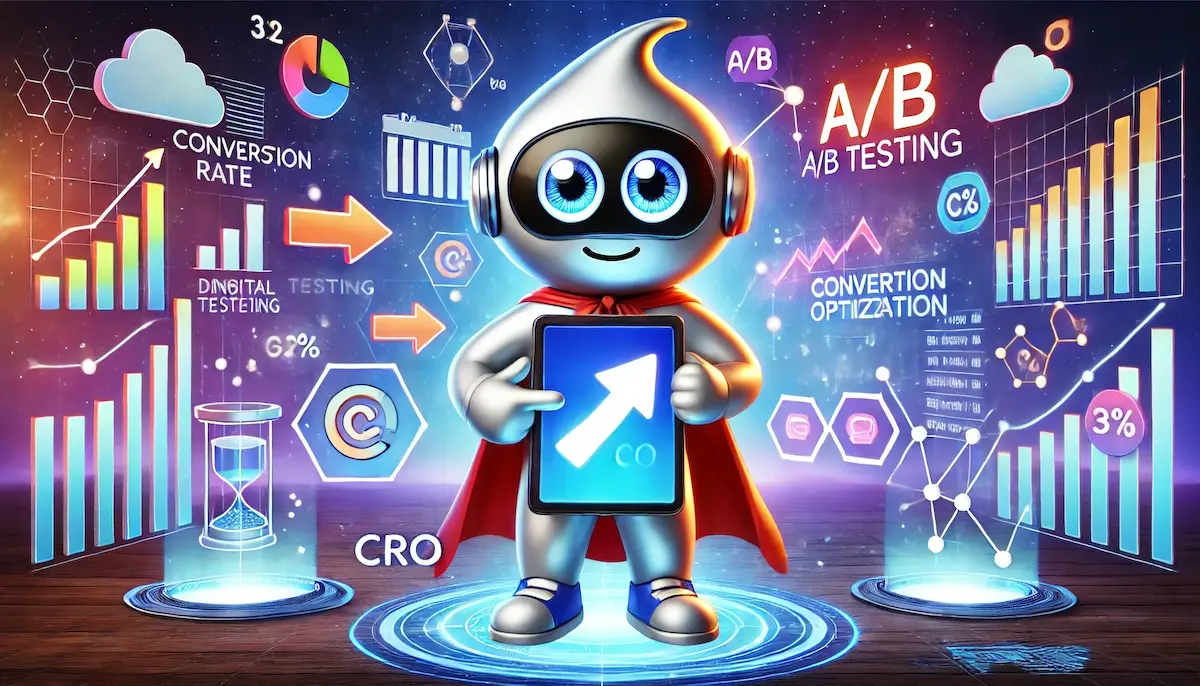Conversion Rate Optimization (CRO) is the process of improving a website or landing page to increase the percentage of visitors who complete a desired action, such as making a purchase, filling out a form, or signing up for a newsletter. CRO involves analyzing user behavior, identifying barriers to conversion, and implementing strategies to enhance the user experience and drive higher conversion rates.
Key Components of CRO
Understanding User Behavior
Understanding how users interact with your website is crucial for effective CRO. Tools and techniques to analyze user behavior include:
- Web Analytics: Tools like Google Analytics provide insights into user behavior, such as page views, bounce rates, and average session duration.
- Heatmaps: Visual representations of where users click, scroll, and spend the most time on a webpage.
- User Recordings: Videos of actual user sessions that show how visitors navigate your site.
- Surveys and Feedback: Direct feedback from users about their experience, including what they liked, disliked, or found confusing.
Identifying Barriers to Conversion
Identifying barriers that prevent users from converting is essential. Common barriers include:
- Poor User Experience (UX): Complicated navigation, slow page load times, or unresponsive design can frustrate users.
- Lack of Trust: Insufficient trust signals, such as lack of reviews, testimonials, or security badges.
- Weak Value Proposition: Unclear or unconvincing reasons for users to take action.
- Distracting Elements: Too many distractions or competing calls-to-action (CTAs) that can confuse users.
A/B Testing
A/B testing, or split testing, involves comparing two versions of a webpage to determine which one performs better. Key elements to test include:
- Headlines: Testing different headlines to see which one captures more attention.
- CTAs: Experimenting with different CTA text, buttons, and placements.
- Images and Videos: Comparing different visuals to see which ones engage users more.
- Form Fields: Testing the number of fields in a form to find the optimal balance between information collected and form completion rate.
Landing Page Optimization
Optimizing landing pages is crucial for CRO. Effective landing page optimization includes:
- Clear Value Proposition: Communicating the unique benefits and features of your product or service.
- Compelling CTAs: Creating strong and persuasive CTAs that encourage users to take action.
- Social Proof: Adding testimonials, reviews, case studies, and trust badges to build credibility.
- Simplified Forms: Reducing the number of form fields and making them easy to complete.
Personalization
Personalizing the user experience can significantly improve conversion rates. Personalization strategies include:
- Dynamic Content: Showing different content to different users based on their behavior, preferences, or demographics.
- Targeted Offers: Providing personalized offers, discounts, or recommendations based on user behavior and interests.
- Behavioral Triggers: Using triggers like exit-intent popups or personalized emails to re-engage users.
Performance Metrics
Tracking and analyzing key performance metrics is essential for CRO. Important metrics to monitor include:
- Conversion Rate: The percentage of visitors who complete the desired action.
- Bounce Rate: The percentage of visitors who leave the site after viewing only one page.
- Average Session Duration: The average time users spend on the site.
- Customer Acquisition Cost (CAC): The cost of acquiring a new customer.
- Return on Investment (ROI): The revenue generated compared to the cost of CRO efforts.
Benefits of CRO
Increased Revenue
By improving conversion rates, businesses can generate more revenue from existing traffic without increasing marketing spend.
Better ROI
CRO enhances the effectiveness of marketing efforts, resulting in a higher return on investment (ROI).
Improved User Experience
Optimizing for conversions often leads to a better overall user experience, increasing customer satisfaction and loyalty.
Lower Customer Acquisition Costs
Higher conversion rates reduce the cost of acquiring new customers, making marketing campaigns more cost-effective.
Competitive Advantage
Businesses that effectively implement CRO can outperform competitors by converting more visitors into customers.
Challenges of CRO
Data-Driven Decision Making
Effective CRO requires a data-driven approach, which can be challenging without the right tools and expertise.
Continuous Testing
CRO is an ongoing process that requires continuous testing, analysis, and optimization to maintain and improve conversion rates.
Balancing User Experience and Conversion Goals
Finding the right balance between optimizing for conversions and providing a positive user experience can be challenging.
Technical Implementation
Implementing changes and tests often requires technical expertise, which can be a barrier for some businesses.
Best Practices for CRO Success
Start with Data Analysis
Begin with a thorough analysis of your website data to identify areas for improvement and prioritize testing efforts.
Focus on User Experience
Ensure that your optimization efforts enhance the overall user experience and do not solely focus on increasing conversions.
Test One Element at a Time
When conducting A/B tests, change only one element at a time to accurately measure its impact on conversion rates.
Use Reliable Tools
Invest in reliable CRO tools and platforms for data analysis, testing, and user feedback.
Learn from Competitors
Analyze competitor websites and their CRO strategies to gain insights and identify opportunities for improvement.
Document and Iterate
Keep detailed records of all tests and their outcomes. Use these insights to iterate and continuously improve your CRO strategy.
Conclusion
Conversion Rate Optimization (CRO) is a critical aspect of digital marketing that focuses on increasing the percentage of visitors who complete desired actions on a website. By understanding user behavior, identifying barriers to conversion, and implementing data-driven strategies such as A/B testing, personalization, and landing page optimization, businesses can significantly improve their conversion rates. Despite its challenges, a well-executed CRO strategy leads to increased revenue, better ROI, improved user experience, and a competitive advantage in the marketplace.
Blockfine thanks you for reading and hopes you found this article helpful.
